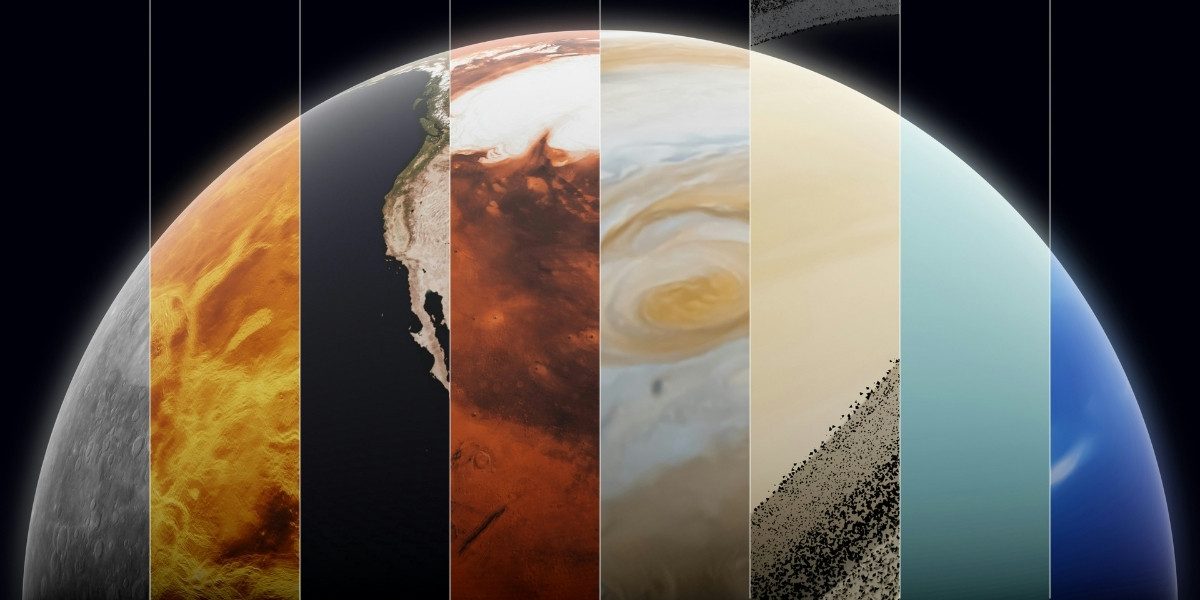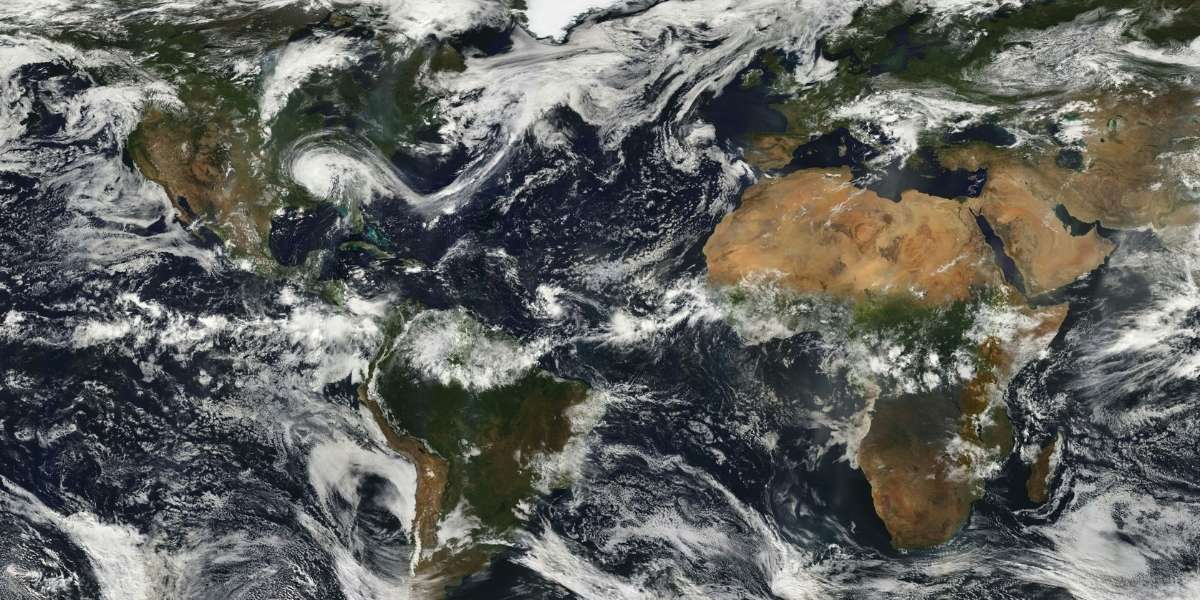Gas Giants vs. Ice Giants: Key Differences in Our Solar System
In our solar system, the two distinct types of giant planets are the gas giants and the ice giants. These massive planets share several similarities but also possess unique characteristics that set them apart. Understanding the differences between gas giants and ice giants can provide valuable insights into planetary formation, atmospheric dynamics, and the variety of worlds that exist in the outer reaches of our solar system.
The gas giants are Jupiter and Saturn, while the ice giants are Uranus and Neptune. Although both groups are often classified as “giants,” they have key differences in terms of their composition, size, atmosphere, moons, and more. Let’s explore these differences in more detail.
Read Also: Practical Strategies for Better Problem-Solving and Decision-Making
Composition and Structure
The primary difference between gas giants and ice giants lies in their composition. Gas giants are largely made up of hydrogen and helium, the lightest and most abundant elements in the universe. This composition results in their immense size and low density, as hydrogen and helium are both gaseous substances that contribute to a thick, extensive atmosphere. Gas giants also have relatively small, dense cores surrounded by layers of gas, with only a small fraction of their mass made up of heavier elements.
In contrast, ice giants like Uranus and Neptune contain a higher proportion of ices, such as water, methane, and ammonia, alongside hydrogen and helium. These “ices” are compounds that, in their frozen forms, exist in solid or liquid states at extremely low temperatures, but they are referred to as ices in planetary science due to their molecular structure. Ice giants have a smaller amount of hydrogen and helium compared to gas giants, and their composition results in a denser internal structure.
The interior of ice giants includes a rocky core, which is surrounded by a thick layer of icy and gaseous material. This difference in composition makes ice giants more dense than gas giants, despite their smaller size.
Atmosphere and Temperature
The atmosphere of gas giants is thick and composed primarily of hydrogen and helium, with trace amounts of other gases such as methane, ammonia, and water vapor. The atmosphere of gas giants is characterized by powerful storms, high-speed winds, and distinct cloud bands, which are driven by internal heat and the planet’s rapid rotation. The Great Red Spot on Jupiter, a massive storm system, is one of the most famous features of gas giants, particularly in Jupiter’s atmosphere.
On the other hand, the atmospheres of ice giants are much colder, with average temperatures dropping to -200°C (-328°F). While hydrogen and helium are still present, ice giants contain a much higher percentage of methane, which gives Uranus and Neptune their signature blue-green color due to methane’s ability to absorb red light. The colder temperatures of the ice giants make their atmospheres even more unique compared to gas giants.
Because of their greater distance from the Sun, ice giants are colder and less turbulent in terms of storm activity compared to the more active gas giants.
Moons and Rings
Both gas giants and ice giants have extensive moon systems, but there are some differences in their moons and rings. Gas giants like Jupiter and Saturn are known for having large numbers of moons, with Jupiter boasting over 70 moons and Saturn having 82. Many of these moons are large and complex, such as Ganymede, the largest moon in the solar system, and Titan, Saturn’s largest moon, which has a thick atmosphere and surface lakes of methane.
Ice giants, by comparison, have fewer moons. Uranus has 27 known moons, and Neptune has 14. However, Neptune’s largest moon, Triton, is especially interesting because it has a retrograde orbit—meaning it orbits Neptune in the opposite direction of the planet’s rotation. This suggests that Triton was likely captured by Neptune’s gravity rather than forming alongside the planet.
Both types of giants also have ring systems, but the rings of gas giants are far more prominent. Saturn’s rings are the most iconic and visible in the solar system, consisting of bright, well-defined bands made of ice particles. In contrast, the rings of ice giants like Uranus and Neptune are much fainter and less visible, making them more difficult to observe.
Size and Density
The gas giants are significantly larger than the ice giants. Jupiter, the largest planet in the solar system, has a diameter of about 86,881 miles (139,822 kilometers) and is more than 300 times the mass of Earth. Saturn, while slightly smaller, is still immense, with a diameter of about 74,900 miles (120,500 kilometers) and a mass that is roughly 95 times that of Earth.
Ice giants, on the other hand, are smaller and denser. Neptune and Uranus both have diameters of about 30,598 miles (49,244 kilometers) and 31,518 miles (50,724 kilometers), respectively. Despite being smaller in size, the ice giants have a higher density due to their composition of heavier elements, such as ices, compared to the gas giants, which are made up of lighter elements like hydrogen and helium.
Temperature Differences
One of the most striking differences between gas giants and ice giants is their temperature. Gas giants, being closer to the Sun, tend to have higher temperatures, particularly in their atmospheres. For example, Jupiter has an average temperature of about -145°C (-234°F), while Saturn’s average temperature is about -178°C (-288°F). These temperatures are still extremely cold compared to Earth, but they are relatively warmer compared to the ice giants.
Ice giants like Uranus and Neptune, on the other hand, are much farther from the Sun and have much colder atmospheres. Uranus has an average temperature of around -224°C (-371°F), making it one of the coldest planets in the solar system. Neptune, though slightly warmer, also has temperatures around -214°C (-353°F), and its atmosphere is primarily made up of methane and hydrogen.
Read Also: Developing AI Tools for Small Businesses: Boosting Efficiency and Growth
The Distinction Between Gas Giants and Ice Giants
In summary, while gas giants and ice giants share some similarities as giant planets located in the outer solar system, they differ significantly in their composition, size, atmosphere, and temperature. Gas giants like Jupiter and Saturn are primarily composed of hydrogen and helium, with large atmospheres, numerous moons, and prominent rings. They are larger and warmer than the ice giants.
On the other hand, ice giants like Uranus and Neptune contain more ices such as water, methane, and ammonia, with smaller, denser structures. Their atmospheres are colder, and their moons and rings are less numerous and less prominent.
These differences not only highlight the diversity of planetary types in our solar system but also offer valuable insights into the processes that govern planetary formation and evolution. Both gas giants and ice giants continue to be objects of fascination and study for astronomers and space enthusiasts alike, and understanding their characteristics is key to understanding our broader universe.








